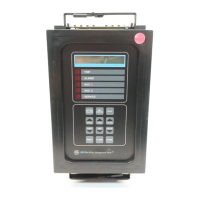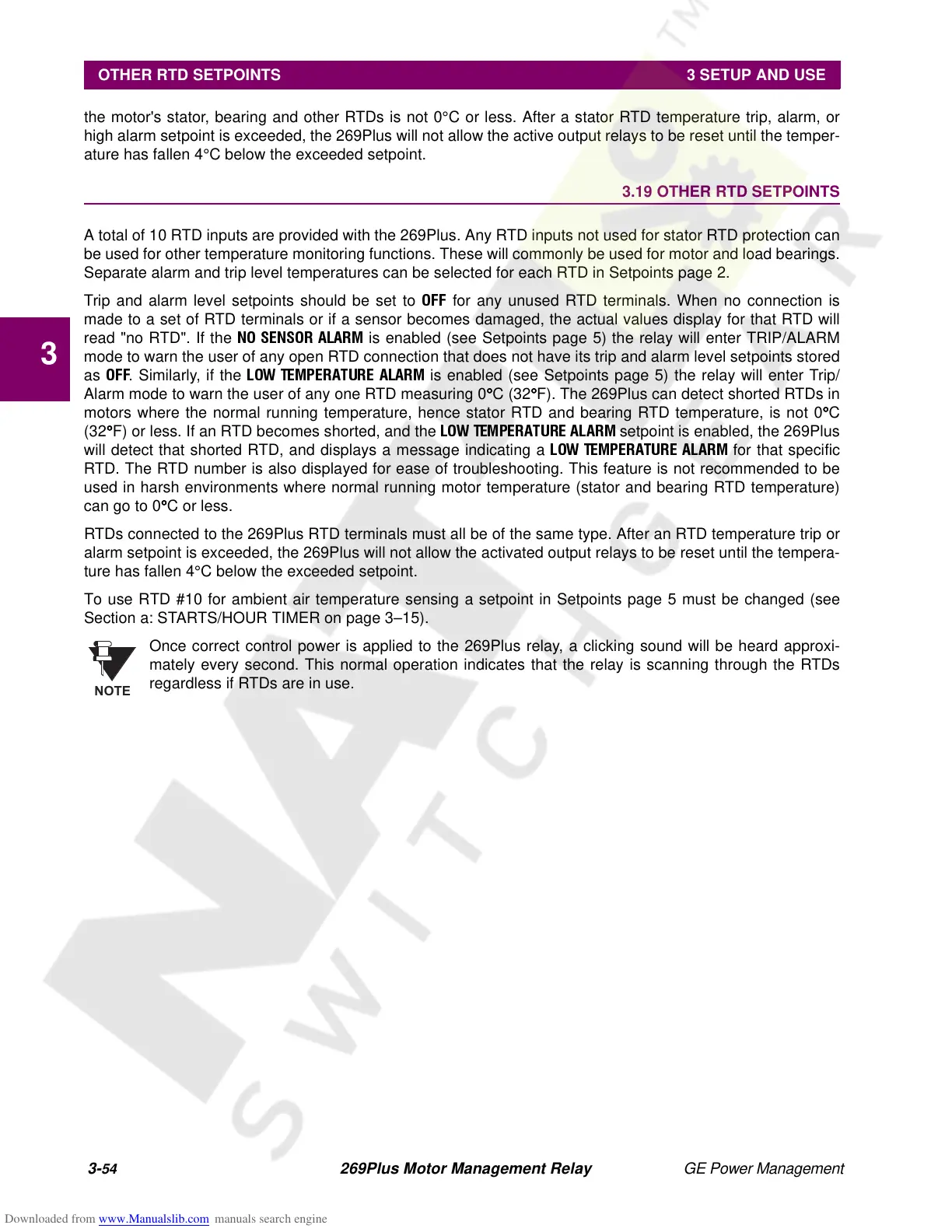3-
54
269Plus Motor Management Relay GE Power Management
OTHER RTD SETPOINTS 3 SETUP AND USE
3
the motor's stator, bearing and other RTDs is not 0°C or less. After a stator RTD temperature trip, alarm, or
high alarm setpoint is exceeded, the 269Plus will not allow the active output relays to be reset until the temper-
ature has fallen 4°C below the exceeded setpoint.
3.19 OTHER RTD SETPOINTS
A total of 10 RTD inputs are provided with the 269Plus. Any RTD inputs not used for stator RTD protection can
be used for other temperature monitoring functions. These will commonly be used for motor and load bearings.
Separate alarm and trip level temperatures can be selected for each RTD in Setpoints page 2.
Trip and alarm level setpoints should be set to
OFF
for any unused RTD terminals. When no connection is
made to a set of RTD terminals or if a sensor becomes damaged, the actual values display for that RTD will
read "no RTD". If the
NO SENSOR ALARM
is enabled (see Setpoints page 5) the relay will enter TRIP/ALARM
mode to warn the user of any open RTD connection that does not have its trip and alarm level setpoints stored
as
OFF
. Similarly, if the
LOW TEMPERATURE ALARM
is enabled (see Setpoints page 5) the relay will enter Trip/
Alarm mode to warn the user of any one RTD measuring 0°
°°
°C(32°
°°
°F). The 269Plus can detect shorted RTDs in
motors where the normal running temperature, hence stator RTD and bearing RTD temperature, is not 0°
°°
°C
(32°
°°
°F) or less. If an RTD becomes shorted, and the
LOW TEMPERATURE ALARM
setpoint is enabled, the 269Plus
will detect that shorted RTD, and displays a message indicating a
LOW TEMPERATURE ALARM
for that specific
RTD. The RTD number is also displayed for ease of troubleshooting. This feature is not recommended to be
used in harsh environments where normal running motor temperature (stator and bearing RTD temperature)
cangoto0°
°°
°Corless.
RTDs connected to the 269Plus RTD terminals must all be of the same type. After an RTD temperature trip or
alarm setpoint is exceeded, the 269Plus will not allow the activated output relays to be reset until the tempera-
ture has fallen 4°C below the exceeded setpoint.
To use RTD #10 for ambient air temperature sensing a setpoint in Setpoints page 5 must be changed (see
Section a: STARTS/HOUR TIMER on page 3–15).
Once correct control power is applied to the 269Plus relay, a clicking sound will be heard approxi-
mately every second. This normal operation indicates that the relay is scanning through the RTDs
regardless if RTDs are in use.
NOTE

